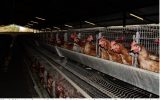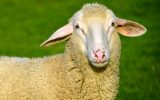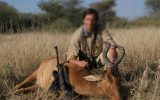Solution for Sheep affected by Nasal Bots
Nasal bots are often thought of as atype of worn that occurs in the nose, and causingsymptoms such as continuous sneezing and a runny nasal discharge. In reality, however, it is the larvae of the nasal bot fly (Ostrusovis) that shed their skin in thenasal cavities, nasal passages and head cavities during maturation, so as to complete its lifestyle.
The fly is well-known across the world and is a source of irritation in sheep, goats and somegame species.
Cases have been also recorded of ophthalmomyiasis, conjunctivitis and eye catarrh in people, because of the presence of the fly larvae in the eye. Initially, people were only affected if they lived and worked on farms, but recent cases have also been observed in the city dwellers. Once the larvae have been removed, the symptoms clear up quickly.
Runny nose with discharge
Animals infested by nasal bot usually exhibit a slimy, purulent nasal discharge. The mucous membranes of the nose are swollen, and erosion lesions are visible. The presence of larvae causes pressure on the mucous membranes and the larvae causes’ pressure on the mucous membranes and the larvae secrete enzymes, enabling them to move upwards in the passages.
There is proof that sheep develop hypersensitivity when larvae are present. This leads to an excessive immune response that further damages their tissue. Sometimes the larvae migrate through the nasal passage to the brain, lesions occur in the cerebral cortex and neurons are broken down.
Neurological signs are noticed and are typical of the signs seen in so-called gid or turning disease. To control spring and summer infestations, it is recommended that a treatment is administered at the end of October and again in March. Ewes need to be treated before lambing and rams before the mating season, so as to ensure a strong sense of smell.
Lambs must be treated to prevent weight loss. Injectable products containing vermectin (e.g. Ecomectin 1% G2275) are effective in killing nasal bot larvae.
Oral treatment of sheep and goats with products containing rafoxanide (e.g. TramisolPlus G1830), closantel, ivermectin (e.g. Ecomectin Sheep Drench G2630) or moxidectin (e.g. Mozxiben G4040) can also be administered.It is important to keep in mind that an improvement will only be seen 3 days after treatment. It can even take longer, as the dead larvae need to be secreted and inflammation in the mucous membranes must subside.
In summer, nasal bots can be fended off by treating sheep with a deltamethrin-containing dip (e.g. Clout G1447, Decaspot G3433, Decatix 3 G1348, or Triatix plus G3434) on the heads. For source of reference or more information, contact an afrvet representative or visit: www.afrivet.co.za




















